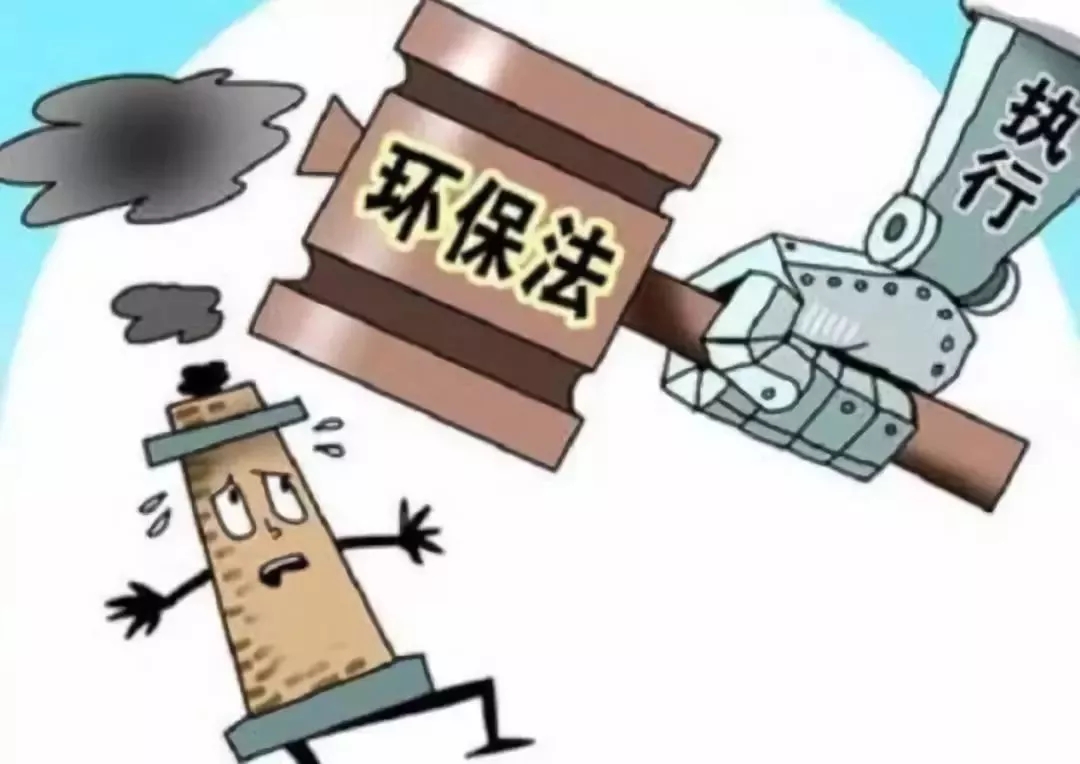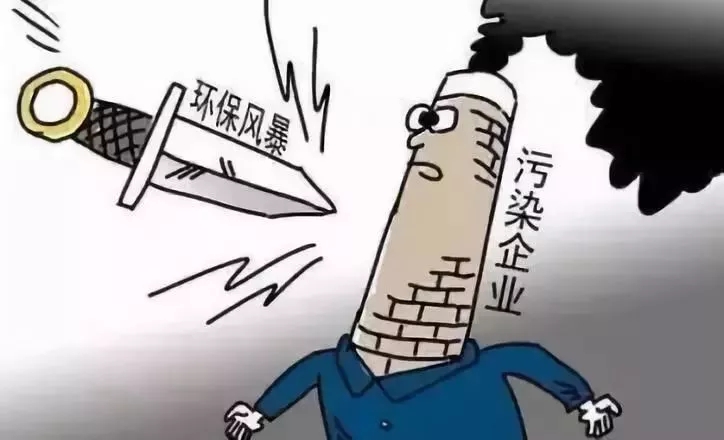Half of the year 2018 has passed, and in the near future, the country's production capacity and environmental protection renovation have been spread throughout the country.

Guangdong Province
Dongguan city strictly grasp “ scattered pollution ” elimination of enterprises rectification work
Recently, Dongguan City issued and implemented the "Dongguan City & ldquo; Disorganized Pollution & rdquo; Implementation Plan for Enterprise Special Rectification", forming a rectification offensive, and striving to eliminate 7000 rectifications within the year. Up to now, the city has completed the elimination and renovation & ldquo; scattered Pollution & rdquo; 4824 enterprises, of which 4019 were closed down, 805 renovated.
Shandong Province
Shandong has shut down 2667 enterprises, and all enterprises are not up to standard for 1 years.
Since the second half of last year, Shandong has closed 558 chemical enterprises and reorganized 2109, accounting for 35.1% of the province's chemical production enterprises. In the first half of this year, Linyi shut down and banned 2915 “ scattered pollution ” enterprises. A total of 8 460 enterprises have completed the rectification of 5 545, closed down and banned “ scattered pollution ” 2 915 enterprises.
Jiangsu Province
More than 13,000 enterprises (workshops) shut down 379 low-end and backward small chemical enterprises in Jiangsu Province from January to May this year, achieving the annual target of 50.5%.
By the end of June this year, 94 chemical enterprises had been shut down in Suzhou (9 shutting down in chemical industrial parks). Since Suzhou launched the special renovation of enterprises (workshops) last year, 25 165 enterprises (workshops) have been closed down and renovated and upgraded. Among them, the first half of this year completed shutting down and renovating 13753, accounting for 67.64% of the annual plan. Among them, 9240 were shut down according to law, and 4513 were upgraded.
On the basis of 1863 renovations completed in 2017 in Xiangcheng District of Suzhou City, the whole district plans to renovate & ldquo; scattered Pollution & rdquo; 5639 enterprises (workshops). Up to now, 4 395 have been completed (including 3 559 closed down according to law, 836 upgraded), the completion rate reached 77.9%, by the end of the year is expected to rectify & ldquo; scattered Pollution & rdquo; nearly 9000 enterprises (workshops).
Changzhou has shut down 40% of the chemical industry.
As of the first half of this year, 355 chemical production enterprises have been closed down in Changzhou, accounting for 40% of the total number of chemical production enterprises in the city.
Beijing, Tianjin and Hebei
Beijing quit 1000 manufacturing companies in three years
Beijing recently issued the "Beijing-Tianjin-Hebei Co-ordinated Development Action Plan for 2018-2020", by 2020, and then withdraw from about 1,000 general manufacturing enterprises, to achieve & ldquo; scattered Pollution & rdquo; Enterprises & ldquo; dynamic zero-clearing & rdquo;. As of the first half of the year, the total number of non-registered business in Beijing reached 19,500, and more than 2,200 general manufacturing enterprises were withdrawn. In the first half of the year, Beijing refused to handle 903 new or altered registrations and closed 473 manufacturing enterprises.
Xiong an closed more than 9000 polluting enterprises last year
In the first half of the year, Shijiazhuang shut down and banned 495 polluting enterprises.
Up to now, a total of 1449 enterprises were found in the city, of which 857 were required to be closed down, 591 were upgraded and 1 was integrated. At present, 633 renovations have been completed, with a completion rate of 43.69%. Of these, 495 have been closed down and banned and 138 have been upgraded. By the end of September, all the upgrading and transformation will be completed; by the end of October, all the integrated relocation work will be completed; if the overdue ones are not completed, all will be closed down to achieve the goals of “ scattered pollution ” dynamic liquidation of enterprises.
Anhui Province
Anhui Mount Huangshan shutting down polluting enterprises more than 170
Since the pilot project of ecological compensation mechanism in Xin'anjiang valley, more than 170 polluting enterprises have been shut down and eliminated in Huangshan City, and more than 90 industrial enterprises have been relocated as a whole.
Anqing investigation and regulation “ small scattered pollution ” 753 Enterprises
Zhejiang Province
Hangzhou: shutting down 144 heavily polluting enterprises by the end of 2018
By the end of 2019, Hangzhou will have basically completed the tasks of & ldquo; scattered Pollution & rdquo; comprehensive renovation of enterprises and clusters; 500 gas-related & ldquo; scattered Pollution & rdquo; and enterprise clean-up and rectification by 2020. By 2020, we will strive to eliminate and renovate more than 1000 enterprises (workshops) every year.
Shaanxi Province
Shaanxi province deadline for rectification 2931, 191 production management, shutting down 644 banned
Shaanxi Province rectified 2,931 cases within the required time limit, registered 792 cases, stopped production and management 191 cases, seized and detained 149 cases, shut down 644 cases, listed and supervised 7 cases at the municipal level, transferred 17 cases of administrative detention to the public security organs, and held 76 cases accountable to the supervisory departments of the industry.
During the rectification, 980 Xi'an municipalities were rectified within a time limit, 293 cases were filed and punished, 82 cases were closed down, 149 cases were seized and detained, 148 cases were shut down, 7 cases were transferred to public security organs for administrative detention, and 44 cases were held accountable by the industry supervision department.
Shanxi Province
As of July 15, Shanxi Province has investigated and dealt with 2124 key pollutant discharge enterprises, 1107 of them have been rectified, with a rectification rate of 52%.
Due to the continuous increase of national environmental protection efforts, the threshold for entry is improved.In addition, the rising prices of raw materials, resulting in a large number of small and medium-sized enterprises operating costs continue to increase, profits are gradually compressed. At present, the existence of enterprises is facing multiple challenges, not only the increase of cost pressure, but also the rise of financing costs, the international situation, Global trade friction and other factors, frequent wage arrears, enterprise management is difficult, the tide of bankruptcy is getting closer and closer to us.

The consequences of environmental storms continue to ferment.
First, intensify the bankruptcy of small and medium-sized private enterprises and reduce economic vitality.
According to the statistics of relevant state departments, there are 40 million small and medium-sized enterprises in China, accounting for 99% of the total number of enterprises, contributing 60% of China's GDP, 50% of the tax revenue and 80% of urban employment. Similarly, around the world, small and medium-sized enterprises are the main force of a country's economy, and they are the most valued groups. In the European Union, there are more than 2000 SMEs, accounting for 99.8% of the total number of EU enterprises. 92.2% of them are micro enterprises with less than 10 employees.
Since 2017, in the context of the reform on the capacity and supply side, the majority of SMEs have become the target of capacity removal. Especially in the case of smog, SMEs have been shut down in a one-size-fits-all manner. Under the environmental protection of Shangfang sword, SMEs have become victims and intensified the bankruptcy of SMEs.
The current round of supply-side and environmental storms started by the enterprise bankruptcy tide, will spread from private SMEs to large state-owned enterprises, from the export manufacturing sector to the basic, resource-based industry sector transmission, from the active service industry to producer services.
Once bankruptcy accelerates, there will be a vicious circle: cheap selling & rarr; asset prices falling & rarr; real interest rates rising & rarr; more cheap selling & rarr; turnover rate falling & rarr; net asset reduction & rarr; more bankruptcy & rarr; bank runs & rarr; credit contraction & rarr; bank selling & rarr; growing confidence & rarr; hoarding cash.
Two, exacerbate the unemployment tide and increase the risk of stability.
The introduction of a document or a measure is often a meeting or a few words, but how many families will bring about the negative impact, what unbearable burden, are not within the scope of the measures formulators. Overcorrection in the process of environmental protection is likely to be the ruin of many families.
Nowadays, self-employed small enterprises are mostly the people after the 70s and 80s, shouldering the livelihood of a family of three generations. Land has been transferred, factories have closed down and closed down. Not only has the business been aborted, but many employees have lost their jobs and jobs. Children's reading, the elderly pension, medical care, will become a great social problem, one-size-fits-all exercise under the storm of environmental protection of the unemployed and the livelihood of the young people how to protect, whether in the consideration of the storm of environmental protection?
Tens of thousands of small and micro enterprises shut down, and how many people were unemployed? Which level of government, departments have thought about their lives how to do? Hebei Langfang workers, because of environmental rectification, power failure caused unemployment, emotional excitement, band protests. It is not known whether more extreme events will happen in the future.
Three, to inflate the flames of inflation, the price has become a new normal.
Recently, the National Bureau of Statistics announced the PMI index of manufacturing industry in July, 51.4, which is in the boom zone. The two indicators rose sharply, with the purchase price index of raw materials rising from 50.4 to 57.9 and the ex-factory price rising from 49.1 to 52.7. The above index shows that prices of raw materials and products are rising sharply.
Textile, mechanical and electrical, packaging and other fields, prices continued to rise. Make sure that the vast number of foreign trade and manufacturing enterprises must pay attention to the relevant stock preparation work.
Last year's surge in prices in many markets was not driven by a pick-up in demand. It was more like a surge in prices triggered by sudden concentration of upstream material production caused by environmental protection and depletion of production capacity. This explosive price increase is difficult to transmit to the terminal enterprises, making many small and medium-sized enterprises located in the middle of the capital chain rupture, order transfer and other reasons for the collapse of the tide.
The worst consequences of too radical supply-side reforms and environmental storms are the remains of small and medium-sized businesses and tens of thousands of laid-off workers, as well as the inflationary tiger on the run. China's economy is going to be healthy and green. It needs time overkill instead of one size fits all.
-END-

